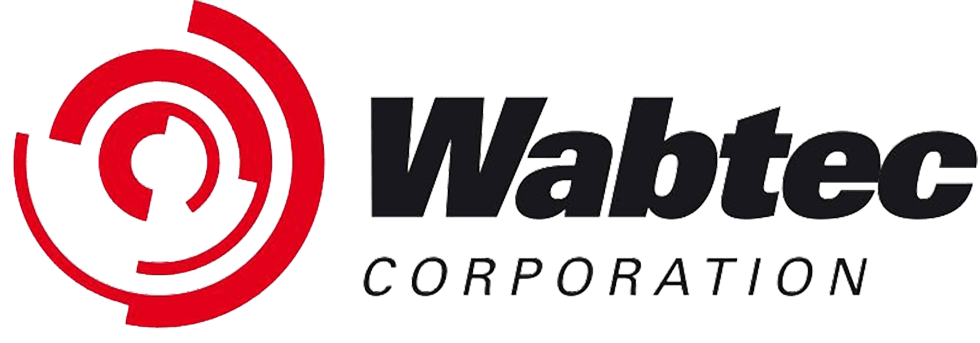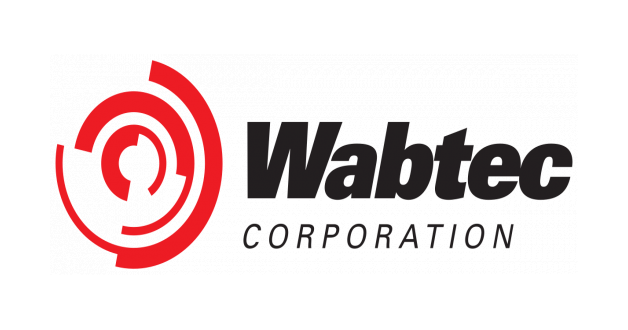Wabtec Corporation (NYSE:WAB) Earnings Preview: What to Expect in Q1 2025

- Analysts project an earnings per share (EPS) of $2.01 and revenue of $2.61 billion for Wabtec's first-quarter 2025 earnings.
- Wabtec has a history of surpassing earnings expectations, with an average earnings surprise of 9.2% in recent quarters.
- The company's financial health appears stable with a P/E ratio of 27.08, a price-to-sales ratio of 2.75, and a debt-to-equity ratio of 0.34.
Wabtec Corporation, trading as Westinghouse Air Brake Technologies (NYSE:WAB), is a key player in the rail industry, providing equipment, systems, and services for freight and transit rail. The company is set to release its first-quarter 2025 earnings on April 23, before the market opens. Analysts expect earnings per share (EPS) to be $2.01, with revenue projected at $2.61 billion.
The earnings estimate for Wabtec has been revised upward by 1.01% over the past 60 days, reflecting positive sentiment among analysts. This revision suggests confidence in Wabtec's performance, particularly in its Freight and Transit segments, which have driven a 4% revenue increase from the previous year. However, increased operating expenses may impact the bottom line.
Historically, Wabtec has a strong track record of surpassing earnings expectations, having exceeded the Zacks Consensus Estimate in three of the last four quarters, with an average earnings surprise of 9.2%. This history of outperformance could influence investor expectations and reactions to the upcoming earnings report.
Despite the positive outlook, the consensus EPS estimate has been slightly revised downwards by 0.2% over the past 30 days. Such revisions are important as they can affect investor sentiment and short-term stock price movements. The actual earnings results compared to these estimates will play a crucial role in determining Wabtec's near-term stock price trajectory.
Wabtec's financial metrics provide additional context for its valuation. The company has a price-to-earnings (P/E) ratio of approximately 27.08 and a price-to-sales ratio of about 2.75. Its debt-to-equity ratio is around 0.34, indicating a moderate level of debt. These figures, along with a current ratio of about 1.30, suggest a stable financial position as Wabtec prepares to announce its earnings.
| Symbol | Price | %chg |
|---|---|---|
| 064350.KS | 230500 | 0 |
| BIRD.JK | 1770 | 0 |
| 9020.T | 3756 | 0 |
| 9022.T | 3766 | 0 |

Wabtec (NYSE:WAB) Quarterly Earnings Preview: A Look at the Anticipated Growth
- Wabtec's anticipated EPS of $2.27 represents a 13.5% increase year-over-year, signaling strong financial performance.
- Revenue is expected to grow by 8.1% to $2.88 billion, driven by growth in both Freight and Transit segments.
- Financial health indicators such as a P/E ratio of 29.02, a debt-to-equity ratio of 0.44, and a current ratio of 1.76 highlight Wabtec's market position and stability.
Westinghouse Air Brake Technologies, known as Wabtec (NYSE:WAB), is a key player in the transportation equipment and leasing industry. The company is set to release its quarterly earnings for the period ending September 2025 on October 22, 2025. Analysts are optimistic, forecasting earnings per share (EPS) of $2.27 and revenue of $2.88 billion.
Wabtec's anticipated EPS of $2.27 represents a 13.5% increase from the same quarter last year. This upward revision of 0.44% over the past 60 days reflects growing confidence among analysts. The company's strong history of earnings beats further bolsters expectations for another positive surprise in the upcoming report.
Revenue projections for Wabtec are equally promising, with an expected 8.1% year-over-year increase to $2.88 billion. The company's Freight and Transit segments are forecasted to grow by 7.8% and 5.9%, respectively. This growth is indicative of Wabtec's robust performance in the transportation sector.
Wabtec's financial metrics provide additional insights into its market position. With a price-to-earnings (P/E) ratio of 29.02, investors are willing to pay a premium for each dollar of earnings. The company's price-to-sales ratio of 3.17 and enterprise value to sales ratio of 3.49 highlight its valuation relative to sales.
The company's financial health is further supported by a debt-to-equity ratio of 0.44, indicating moderate debt levels. A current ratio of 1.76 suggests Wabtec's strong ability to cover short-term liabilities. These metrics, combined with a positive Earnings ESP and a Zacks Rank #2, position Wabtec favorably for its upcoming earnings release.

Westinghouse Air Brake Technologies Corporation (Wabtec) Stock Analysis
Westinghouse Air Brake Technologies Corporation (NYSE:WAB), commonly known as Wabtec, is a prominent entity in the freight rail and passenger transit sectors. The company, established in 1869 and headquartered in Pittsburgh, Pennsylvania, offers a wide range of technology-based equipment, systems, and services. This diverse portfolio has contributed to a positive shift in its stock consensus target price, which has increased from $221.67 a year ago to $240 currently.
The stable target price over the last month and quarter suggests a consistent confidence among analysts regarding Wabtec's future performance. This optimism is further supported by the company's strategic acquisition of the Inspection Technologies division. As highlighted by Morgan Stanley, this acquisition is expected to enhance Wabtec's earnings, revenues, and operational performance, potentially strengthening its market position.
Investors and stakeholders in the transportation sector should pay attention to Wabtec's upcoming second-quarter 2025 earnings report. This report, along with those of other key players like Union Pacific Corporation, Southwest Airlines Co., and American Airlines Group Inc., will provide valuable insights into the company's performance and future prospects. As always, thorough research and consideration of various factors are essential before making investment decisions.

Wabtec Corporation (NYSE:WAB) Earnings Preview: What to Expect in Q1 2025
- Analysts project an earnings per share (EPS) of $2.01 and revenue of $2.61 billion for Wabtec's first-quarter 2025 earnings.
- Wabtec has a history of surpassing earnings expectations, with an average earnings surprise of 9.2% in recent quarters.
- The company's financial health appears stable with a P/E ratio of 27.08, a price-to-sales ratio of 2.75, and a debt-to-equity ratio of 0.34.
Wabtec Corporation, trading as Westinghouse Air Brake Technologies (NYSE:WAB), is a key player in the rail industry, providing equipment, systems, and services for freight and transit rail. The company is set to release its first-quarter 2025 earnings on April 23, before the market opens. Analysts expect earnings per share (EPS) to be $2.01, with revenue projected at $2.61 billion.
The earnings estimate for Wabtec has been revised upward by 1.01% over the past 60 days, reflecting positive sentiment among analysts. This revision suggests confidence in Wabtec's performance, particularly in its Freight and Transit segments, which have driven a 4% revenue increase from the previous year. However, increased operating expenses may impact the bottom line.
Historically, Wabtec has a strong track record of surpassing earnings expectations, having exceeded the Zacks Consensus Estimate in three of the last four quarters, with an average earnings surprise of 9.2%. This history of outperformance could influence investor expectations and reactions to the upcoming earnings report.
Despite the positive outlook, the consensus EPS estimate has been slightly revised downwards by 0.2% over the past 30 days. Such revisions are important as they can affect investor sentiment and short-term stock price movements. The actual earnings results compared to these estimates will play a crucial role in determining Wabtec's near-term stock price trajectory.
Wabtec's financial metrics provide additional context for its valuation. The company has a price-to-earnings (P/E) ratio of approximately 27.08 and a price-to-sales ratio of about 2.75. Its debt-to-equity ratio is around 0.34, indicating a moderate level of debt. These figures, along with a current ratio of about 1.30, suggest a stable financial position as Wabtec prepares to announce its earnings.

Wabtec Plunges 9% as Q4 Miss and Soft 2025 Outlook Weigh on Shares
Wabtec (NYSE:WAB) saw its shares drop 9% intra-day today after delivering disappointing fourth-quarter results and issuing a weaker-than-expected 2025 earnings outlook.
For Q4, the rail equipment maker posted adjusted earnings per share of $1.68, falling short of the $1.74 consensus estimate. Revenue of $2.58 billion also missed forecasts of $2.63 billion, despite rising 2.3% year-over-year.
For full-year 2024, Wabtec reported adjusted EPS of $7.56 on revenue of $10.39 billion, reflecting 7.3% annual revenue growth. However, investors focused on the company's cautious guidance for 2025, with projected adjusted EPS of $8.35 to $8.75. The midpoint of $8.55 came in below Wall Street’s $8.64 estimate, raising concerns about slower earnings momentum.
Despite the earnings miss, Wabtec highlighted strong order growth, with Q4 orders increasing 20% year-over-year, driven by over $1 billion in new locomotive and modernization contracts. The company’s 12-month backlog grew 3% to $7.68 billion, signaling continued demand for its rail solutions.
While Wabtec delivered higher orders and margin expansion in 2024, the softer-than-expected profit outlook for 2025 has left investors wary, triggering the stock’s sharp decline.

Wabtec Plunges 9% as Q4 Miss and Soft 2025 Outlook Weigh on Shares
Wabtec (NYSE:WAB) saw its shares drop 9% intra-day today after delivering disappointing fourth-quarter results and issuing a weaker-than-expected 2025 earnings outlook.
For Q4, the rail equipment maker posted adjusted earnings per share of $1.68, falling short of the $1.74 consensus estimate. Revenue of $2.58 billion also missed forecasts of $2.63 billion, despite rising 2.3% year-over-year.
For full-year 2024, Wabtec reported adjusted EPS of $7.56 on revenue of $10.39 billion, reflecting 7.3% annual revenue growth. However, investors focused on the company's cautious guidance for 2025, with projected adjusted EPS of $8.35 to $8.75. The midpoint of $8.55 came in below Wall Street’s $8.64 estimate, raising concerns about slower earnings momentum.
Despite the earnings miss, Wabtec highlighted strong order growth, with Q4 orders increasing 20% year-over-year, driven by over $1 billion in new locomotive and modernization contracts. The company’s 12-month backlog grew 3% to $7.68 billion, signaling continued demand for its rail solutions.
While Wabtec delivered higher orders and margin expansion in 2024, the softer-than-expected profit outlook for 2025 has left investors wary, triggering the stock’s sharp decline.







